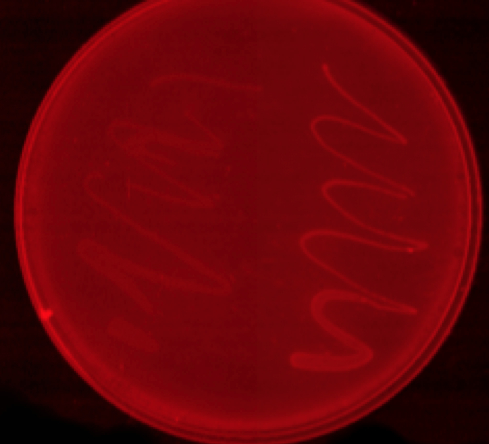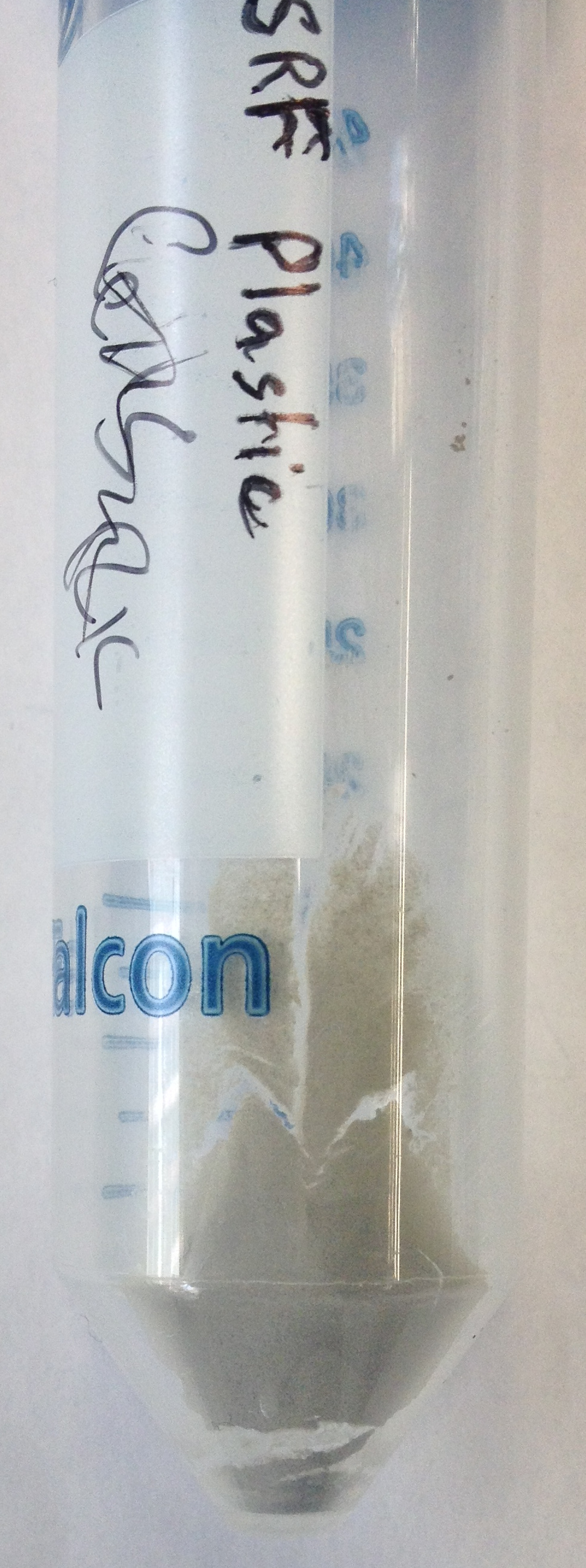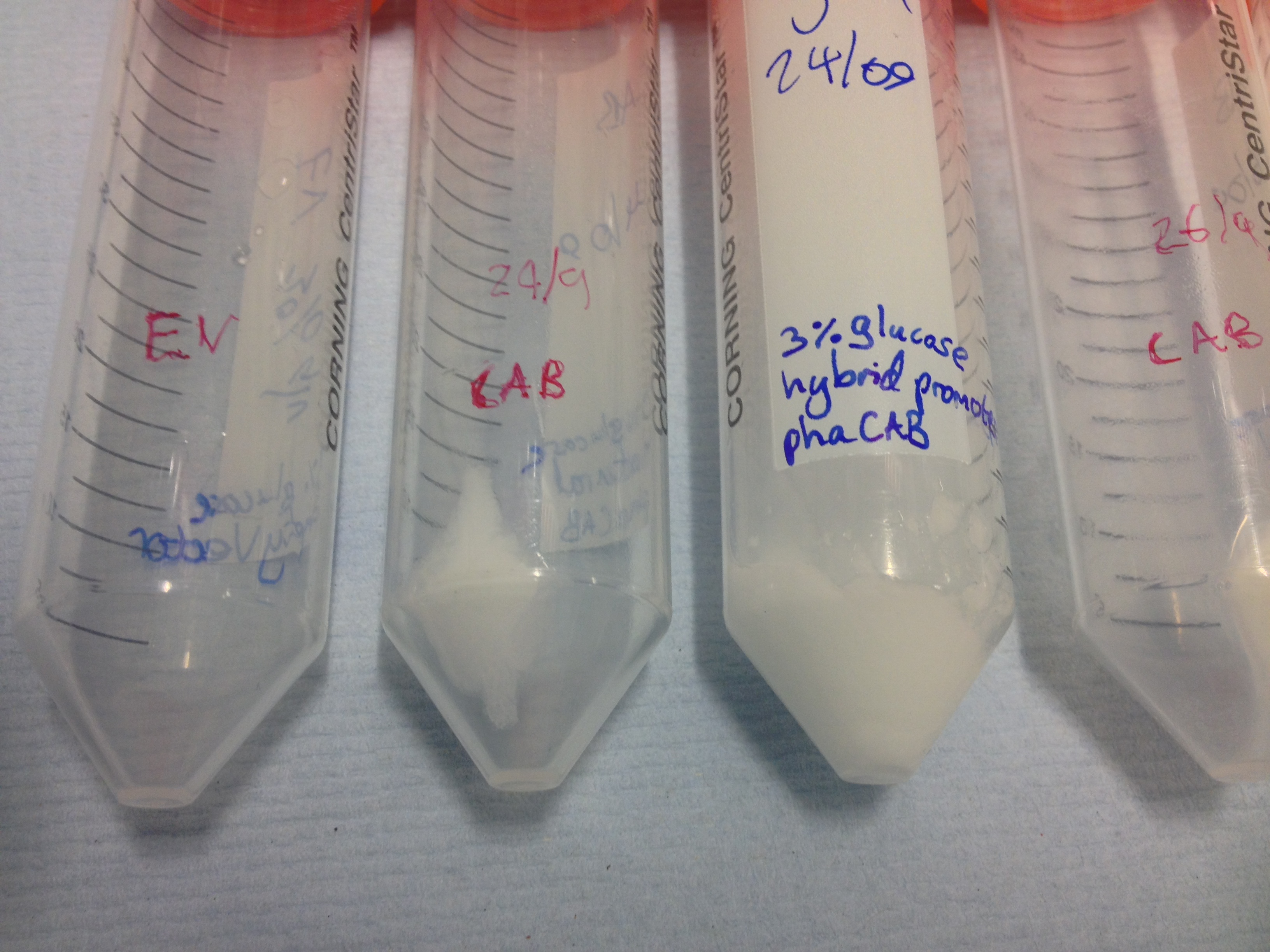Team:Imperial College/PHB production
From 2013.igem.org
(Difference between revisions)
Iain Bower (Talk | contribs) |
Iain Bower (Talk | contribs) |
||
| Line 23: | Line 23: | ||
{| class="wikitable" style="margin: 1em auto 1em auto;" | {| class="wikitable" style="margin: 1em auto 1em auto;" | ||
| - | |[[File:EV-phaCAB-hybrid.JPG|thumbnail|left|500px|<b>Comparison of P3HB production </b> P3HB extracted from E.coli MG1655 with pSB1C3 containing nothing, natural phaCAB(BBa_K934001) and phaCAB expressed from the hybrid promoter, (BBa_K1149051). Each produced in 300ml cultures of LB with 3% glucose after one night growing at 37 degrees celsius.]] | + | |[[File:EV-phaCAB-hybrid.JPG|thumbnail|left|500px|<b>Comparison of P3HB production </b> P3HB extracted from E.coli MG1655 with pSB1C3 containing, from left to right, nothing, natural phaCAB(BBa_K934001) and phaCAB expressed from the hybrid promoter, (BBa_K1149051). Each produced in 300ml cultures of LB with 3% glucose after one night growing at 37 degrees celsius.]] |
|} | |} | ||
{{:Team:Imperial_College/Templates:footer}} | {{:Team:Imperial_College/Templates:footer}} | ||
Revision as of 20:31, 29 September 2013
PHB production
During our project we successfully synthesised the bioplastic P(3HB).
Nile red staining
O/N cultures of MG1655 transformed with either control or phaCAB plasmid were spread onto LB-agar plates with 3% glucose and Nile red staining.
Conclusion: The red staining indicates the production of P(3HB). More importantly our new Biobricks [http://parts.igem.org/wiki/index.php?title=Part:BBa_K1149051 hybrid promoter phaCAB BBa_K1149051] and [http://parts.igem.org/wiki/index.php?title=Part:BBa_K1149052 constitutive phaCAB BBa_K1149052] produce more P(3HB) than the native phaCAB operon
Purification of P3HB
 "
"








